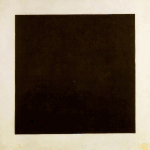|
Rabhadh posted:I can only imagine that a teutonic knight wearing massive horns on his helmet never expects to be on his feet fighting for his life, seeing has the horns are just screaming "grab these and pull me off balance". Either this reflects the nature of the combat during eastern crusade (lets just charge these fuckers and go home, ie. there is no need to get off my horse) or its do denote command. Follow the guy with the big horns! In all fairness, if you take the time to consider what it takes to grab horns on top of a man who is six feet tall, while in combat, and still go for it, perhaps you deserve the sword in the gut.
|
|
|
|

|
| # ? Jun 10, 2024 22:46 |
|
The way I've understood it, horned helmets were more of a ceremonial attire or something you'd break out on very special occasions, like a duel or a frontal charge at Tannenberg or something. On relevant literature or contemporary sources (church murals, city seals etc.) the Teutonic knights have much more practical headgear outside of some ceremonial situations. The most dandy thing in battle seemed to be a visored bascignet with feathers. Osprey's campaign book on Tannenberg has some nice depictions. As for best polearm, I like the bear spear. A cheap everyman's weapon, simple but deadly, and rhymes better than most.
|
|
|
|
Blckdrgn posted:In all fairness, if you take the time to consider what it takes to grab horns on top of a man who is six feet tall, while in combat, and still go for it, perhaps you deserve the sword in the gut. Maybe not grabbing, but a lot of things that otherwise might miss the head altogether or reflect from the helmet might hit the horns and yank the head quite unpleasantly.
|
|
|
|
re: Pole arms, I really like the look of the Błyskawica (Lightning) SMG. Kind of Flash Gordon-esque in a way, and manufactured in an occupied country. They numbered in hundreds.
|
|
|
|
Blckdrgn posted:In all fairness, if you take the time to consider what it takes to grab horns on top of a man who is six feet tall, while in combat, and still go for it, perhaps you deserve the sword in the gut. I think those horns were detachable? It doesn't seem that historical accounts actually mention knights fighting with horns on their heads, and from pictures I've seen, examples of otherwise standard horned bucket helm designs have their horns attached quite shoddily and presumably temporarily. I suppose that fashionable trends of tournament helms and of heraldry manifested themselves on actual combat equipment, but nobody was stupid enough to force themselves into wearing something as crippling into battle. Nevertheless, the best horned helmet, and doubtlessly also the most practical, was that of Henry VIII. 
|
|
|
|
Plus, you have the fact that hauling around that extra weight on your head definitely matters when on long marches. While I guess some officers may be incompetent enough to reduce the fighting effectiveness of their infantry because horns look cool, I doubt that they would be the ones that win battles and get to write the history.
|
|
|
|
SlothfulCobra posted:Has anyone ever used horns on their helmets? (Pickelhaubes don't count) The samurai did all kinds of weird horns and antlers on the more elaborate helmets. Sometimes with wood or metal, sometimes with papier mache. You would't see average dude running around with horns though. And there's always the Waterloo Helmet: http://en.wikipedia.org/wiki/Waterloo_Helmet EDIT: (both are modern recreations)  "Oh yeah, check out my rad antlers!"  "I'm Kuroda Nagamasa, and I support the use of ridiculously oversized horns on helmets." lilljonas fucked around with this message at 20:10 on Oct 26, 2012 |
|
|
Nenonen posted:re: Pole arms, I really like the look of the Błyskawica (Lightning) SMG. Kind of Flash Gordon-esque in a way, and manufactured in an occupied country. They numbered in hundreds. It like if the Sten Gun and MP-42 had babies!
|
|
|
|
|
SeanBeansShako posted:It like if the Sten Gun and MP-42 had babies! ugly....ugly babies.
|
|
|
|
Blckdrgn posted:ugly....ugly babies. Ugly babies don't have beautiful butts 
|
|
|
|
That's cool as hell. It's reminiscent of the anti-fascist circle what with the three arrows and all.
|
|
|
|
Grand Prize Winner posted:That's cool as hell. It's reminiscent of the anti-fascist circle what with the three arrows and all. Yes, that's why they're there! The antifascist arrows predate World War II.
|
|
|
|
Konstantin posted:Plus, you have the fact that hauling around that extra weight on your head definitely matters when on long marches. While I guess some officers may be incompetent enough to reduce the fighting effectiveness of their infantry because horns look cool, I doubt that they would be the ones that win battles and get to write the history. You wouldn't wear full helms like that while on the march anyway, you'd put it on right before battle.
|
|
|
|
I was listening to game designer Lee Brimmicombe-Wood talk about his Bomber Command boardgame on a podcast, when he mentioned something about "musical bombing" and oboes as targeting methods for RAF bomber streams? Were these just code-names for devices or did they literally use music?
|
|
|
|
gradenko_2000 posted:I was listening to game designer Lee Brimmicombe-Wood talk about his Bomber Command boardgame on a podcast, when he mentioned something about "musical bombing" and oboes as targeting methods for RAF bomber streams? Were these just code-names for devices or did they literally use music? Code names. Oboe was basically a system of triangulation via radio, a pathfinder bomber, usually a Mosquito, would receive a coded signal from two Oboe ground stations and then retransmit that signal back to them. So now each station knows how far away the bomber is. That in itself isn't that big a deal, but the thing is that you draw a circle on the map around each Oboe station, with a diameter such that the two circles intersect at the target. Then the Oboe stations communicate with the bomber and give it nav instructions, first getting it onto the circumference of one of the circles, and then flying it along that circumference until it intersects the other circle, it's now over the target and it drops its flares for the bomber raid following behind it.
|
|
|
|
Phanatic posted:Code names. Oboe was basically a system of triangulation via radio, a pathfinder bomber, usually a Mosquito, would receive a coded signal from two Oboe ground stations and then retransmit that signal back to them. So now each station knows how far away the bomber is. That in itself isn't that big a deal, but the thing is that you draw a circle on the map around each Oboe station, with a diameter such that the two circles intersect at the target. Then the Oboe stations communicate with the bomber and give it nav instructions, first getting it onto the circumference of one of the circles, and then flying it along that circumference until it intersects the other circle, it's now over the target and it drops its flares for the bomber raid following behind it. Fascinating! Any other methods you can share for bomber targeting? Prior to your post, I was only familiar with a Mosquito flying ahead of the bomber stream and dropping flares so that the city could be visually identified, or using radar to directly identify the city via the radar return of the buildings.
|
|
|
|
Speaking of Lee Brimmicombe-Wood, he wrote this series of pretty cool articles about intercepting night bombers in WW2: They are basically historical notes for his earlier game, Nightfighter. He describes the various technological and organizational innovations used by both British and Germans to overcome the fact that it's dark at night and you can't see poo poo. At least I thought that it was oddly fascinating to read such a detailed descriptions about all these systems that I hadn't really even heard about before.
|
|
|
|
Obfuscation posted:Speaking of Lee Brimmicombe-Wood, he wrote this series of pretty cool articles about intercepting night bombers in WW2: That is some priceless stuff. quote:On the first night Corona was used, 22/23 October 1943, the Luftwaffe controller was reduced to apoplectic rage by the tactic, screaming 'Don't be led astray by the enemy' to his fighters. When he started cursing into his microphone the RAF 'ghost' controller was to tartly respond: 'The Englishman is now swearing!' prompting the German to shout 'It is not the Englishman who is swearing, it is me!'
|
|
|
|
quote:Curiously, the Germans had been working on their own version of Window, named Düppel ('Dipole'). In 1942 the head of the Luftwaffe's signals service, Wolfgang Martini, presented a report to Göring, emphasizing the danger that a countermeasure like Düppel presented to the Reich Air Defence. Göring was horrified. He ordered all copies of Martini's report destroyed and research on Düppel and countermeasures to be halted, lest the secret leak out. It was yet another of the Fat Man's grand errors and the lack of research on countermasures was to greatly set back the night defences. "Hey, our radar is vulnerable to a cheap, easy to manufacture, and effective countermeasure. We should do something about that." "Quick! Destroy the report! Stop all research! Lest the Allies find out about it!"
|
|
|
|
I don't think anyone's really interested in this stuff but I've revisited the topic of 1980s tank numbers which kinda started off with Veins' post here and continued on for a little bit. The dataset presented in Is There A Tank Gap? is pretty flawed IMO and at the very least suffers from a number of miscounts and misrepresentations. Here's the table Chalmers and Unterseher show on p.18:  On the Warsaw Pact side there's a couple of things I don't get:
I've done a recount on tank numbers based on a couple of sources and the new numbers are a bit different, here they are:  First of all, these are mid-1985 numbers instead of '87. I don't care for speculating about a major war after the rapprochement of the mid eighties except for maybe late '89, which is a whole different story. Second, it's really hard to get a grip on strength during different stages of mobilisation (which is a lot easier for NATO, which I could show later). We still know very little about Warpac plans for a contingency on the Central Front so I've simplified days into echelons. I'd wager offensive operations would have started as soon as the first echelon was up and running, save for a stray division here and there. Incidentally, I believe this would probably have been somewhere between day 3 and day 10 on the timescale Chalmers and Unterseher present. Furthermore:
Those last two points are outside of the scope of pretty much any realistic military contingency in Europe IMO. The Flashpoint was Germany and I'd say the Soviets would have wanted to limit both the time and the space in which a conflict could have escalated in an uncontrolled way. No long lead-up time and no wide geographical focus then.
|
|
|
|
As a bit of research for my B-17 Queen of the Skies campaign, when did the 8th Air Force begin their bombing campaign in earnest, and how often would any given bomber fly missions? I'm trying to get a feel for how much time should pass, as a way to gradually introduce B-17G models as well as late-war Luftwaffe interceptors.
|
|
|
|
Koesj posted:I don't think anyone's really interested in this stuff On the contrary. I had a question about the first table. Why are the Soviet tank forces separated into four different categories, while US forces are presented as a single entity? I get the impression that it's a purely rhetorical gesture to make the Soviet totals look less impressive, and pump up the appearance of the US statistic. Why not divide the US category into bits, like "US Forces in Germany," "US National Guard in USA," and so forth? It's possible that it's intended to highlight a perceived difference in quality between the Soviet units at the tip of the spear and the ones that would later be assembled. But if so, wouldn't the same be true for the US total, which probably includes National Guard units that were only developed into front-line quality units following the reduction in regular force levels after 1992.
|
|
|
|
How did the Ottomans just hire away the Byzantines' top gunner back in the 15th century? Is it a relatively common thing for mercenaries to be hired away by the opposing side of a war?
|
|
|
|
They couldn't afford him, the Ottomans could. No great mystery. This was before the time of nationalism as well, so your choices were either one royal house or the other. Engineers were very important mercenaries so they'd command a big wage.
|
|
|
|
In the 15th century high profile generals, commanders, engineers and other military individuals tended to be mercenaries. Bear in mind that such people were looked upon differently back then. A mercenary working for one side and then joining the other side after his contract expired was quite a normal thing, a thing you wouldn't usually take personally, just like you wouldn't be pissed off if a painter or a sculptor worked for someone you didn't like.
|
|
|
|
Rabhadh posted:They couldn't afford him, the Ottomans could. No great mystery. This was before the time of nationalism as well, so your choices were either one royal house or the other. Engineers were very important mercenaries so they'd command a big wage. He was also German, not Greek.
|
|
|
|
Hungarian, as I recall.
|
|
|
|
Who are you actually talking about?
|
|
|
|
Lichtenstein posted:Who are you actually talking about? "Urban" was an engineer who built bombards for the King of Hungary. When the Ottoman Sultan Mehmed II began preparing for an attack on Constantinople, he offered his services to the Roman court but they had no money to pay him. He instead went to work for the Turks, and he built many cannons, including an enormous example much larger than any previously built, which was instrumental in the Turkish assault. Aside from that, little is known about him. SlothfulCobra posted:Hungarian, as I recall. Urban lived in Hungary but was likely German, because the commercial and industrial trades in medieval Hungary were largely conducted by Germans. As another example, much of the information we have about the brutality of Vlad III Tepes (better known as Dracula) actually comes from pamphlets printed in the Holy Roman Empire at the behest of the German merchants who made their livings in Wallachia, whom he taxed heavily taxed and allegedly persecuted to fund his wars with the Turks.
|
|
|
|
Well, what stopped a noble from simply murdering particularly skilled mercenaries should their contract expire and he receive word that they were going to flip to the other side? Saves you losing your drat castle.
|
|
|
|
Phobophilia posted:Well, what stopped a noble from simply murdering particularly skilled mercenaries should their contract expire and he receive word that they were going to flip to the other side? It happened occasionally (see Xenophon, for example) but mercenaries do have swords and aren't afraid to use them (see Manzikert, for example. The Turkish and Frankish mercenaries refused to fight and ended up plundering central Anatolia for a bit). . Besides, until the rise of the levee en masse and national armies, everyone needed them, so murdering them wasn't always practical. The Mongols were pretty big on telling siege engineers to "work for us or we'll kill you" so it was an option if you didn't give any fucks. Supposedly "Urban" ended up being quite literally hoist on his own petard, which was seen as divine justice for serving the Mohammadeans, but who knows for sure what happened.
|
|
|
|
EvanSchenck posted:Why not divide the US category into bits, like "US Forces in Germany," "US National Guard in USA," and so forth? It's possible that it's intended to highlight a perceived difference in quality between the Soviet units at the tip of the spear and the ones that would later be assembled. But if so, wouldn't the same be true for the US total, which probably includes National Guard units that were only developed into front-line quality units following the reduction in regular force levels after 1992. Transport issues maybe? Even given REFORGER, Soviet second-line units were already in Europe and in a position to just drive to the front; National Guard dudes and equipment would need to be flown over, and that's a lot of transporting.
|
|
|
|
Mans posted:They could ask the Americans, they DID fight the British multiple times during this era. Uh, ask the Americans to do what, exactly? The US wasn't exactly known for transatlantic force projection at the time.
|
|
|
|
feedmegin posted:Transport issues maybe? Even given REFORGER, Soviet second-line units were already in Europe and in a position to just drive to the front; National Guard dudes and equipment would need to be flown over, and that's a lot of transporting. http://en.m.wikipedia.org/wiki/Civil_Reserve_Air_Fleet Combining the CRAF with pre-positioned heavy equipment sets and supply dumps in Europe, REFORGER was a pretty quick proposition. Even given the advance warning required to execute REFORGER completely, and move the reinforcing troops into position, I still can't see the limited NATO forces being able to stop a balls-out Pact advance, but that's a seperate argument.
|
|
|
|
Phobophilia posted:Well, what stopped a noble from simply murdering particularly skilled mercenaries should their contract expire and he receive word that they were going to flip to the other side? If you did that, no mercenary would work for you in the future.
|
|
|
|
So when did mercenaries stop being widely used in warfare? I know that PMC type companies have made a resurgence with iraq and afghanistan it seems like but was there those types of companies doing security type work or even fighting in the late 1800s-early 1900s all the way to ww2 at all?
|
|
|
|
MrYenko posted:http://en.m.wikipedia.org/wiki/Civil_Reserve_Air_Fleet I'm aware there was a lot of equipment pre-positioned - but it wasn't like the entire US Army's inventory of tanks was stored in West Germany, and we're speaking specifically of National Guard units as the equivalent of the USSR's second and third line guys in obsolescent T-54s and so on. Correct me if I'm wrong, but those guys would mostly have had to ship their gear over by sea.
|
|
|
feedmegin posted:I'm aware there was a lot of equipment pre-positioned - but it wasn't like the entire US Army's inventory of tanks was stored in West Germany, and we're speaking specifically of National Guard units as the equivalent of the USSR's second and third line guys in obsolescent T-54s and so on. Correct me if I'm wrong, but those guys would mostly have had to ship their gear over by sea. There was/is a ton of gear stored in Europe and on MPF shipping. http://en.wikipedia.org/wiki/Maritime_Prepositioning_ship
|
|
|
|
|
Veins McGee posted:There was/is a ton of gear stored in Europe and on MPF shipping. Once again I'm aware of this. I'd expect that'd there would be masses of heavy equipment awaiting the first-line US regular military rushing over to Europe, the equivalent of the Guards Tank Divisions leading the advance on the Soviet side. Did the US really store a ton of Arkansas National Guard M48s and whatnot in Europe in the 80s, though? Because that's the comparison I'm drawing here, not the first-line stuff.
|
|
|
|

|
| # ? Jun 10, 2024 22:46 |
feedmegin posted:Once again I'm aware of this. I'd expect that'd there would be masses of heavy equipment awaiting the first-line US regular military rushing over to Europe, the equivalent of the Guards Tank Divisions leading the advance on the Soviet side. Did the US really store a ton of Arkansas National Guard M48s and whatnot in Europe in the 80s, though? Because that's the comparison I'm drawing here, not the first-line stuff. Probably not but the National Guard would have training on m60s or M1s so it doesn't really matter. In either case, the emphasis of a real REFORGER probably would have been placed on first line fighting units and not the National Guard.
|
|
|
|






























